David Austin roses: pros, cons and popular varieties

David Austin reminded the world of the forgotten beauty of old English roses, which are distinguished by a strong aroma, large bud size, resistance to fungal and other diseases. Austin varieties are not included in the official classification of Rosaceae, despite the fact that there are already over 200 of them and they are in great demand among amateur and professional gardeners.
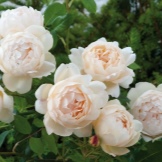
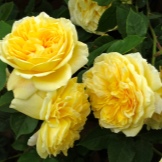
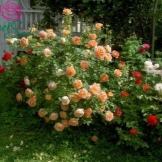
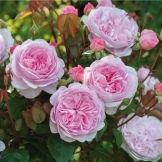
Description
In 1950, David Austin in France noticed ancient rose bushes with a unique flower appearance and a pleasant strong scent. Inspired by its beauty, he wanted to create a modern variety that combines the characteristics of forgotten types of roses. and will meet new plant requirements, including resistance to adverse weather conditions. The main task was to give new bushes the ability to re-bloom and develop in different climatic zones. Old types of roses are distinguished by the absence of warm shades in the yellow range, which the breeder also wanted to change.

Crossing Bel Isis and Le Grasse in 1961 led to the creation of Austin's first Constance Spray rose. It belongs to the peony varieties. Its large, cupped flowers are pink in color and have a persistent aroma. "Constance Spray" dissolves the buds only once a year, however, it has gained great love among gardeners and remains relevant and popular these days.

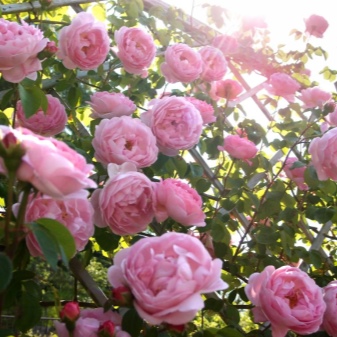
In 1984, about 50 plant varieties were already presented, which appeared through the selection of old species with hybrid tea roses., floribunda group, wild rose. Austin varieties in appearance resemble Damascus, Bourbon, Gallic, Albu, but differ in a wide color palette, the ability to grow on depleted soils, and resistance to poor environmental conditions. With outward old-fashionedness, most of their species are re-flowering, some are capable of multiple continuous flowering. The main plus is the reduced demand for lighting, 4 hours of daylight are enough for roses to develop.
All Austin cultures have buds like old rose bushes - cupped, rosette, pompom. Cone-shaped flowers (the shape is inherent in the hybrid tea species) David rejected during crossing. Each variety is distinguished by its rich aroma. The name "Jude the Obscur" is assigned to the most fragrant Austin rose, its scent is able to compete with real French perfume.
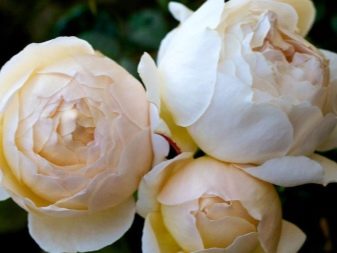
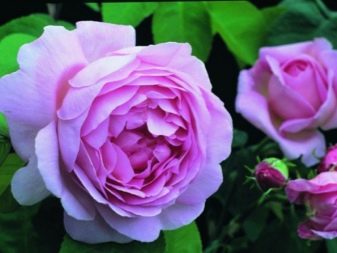
About 4 new crop varieties are recorded every year. Among them were bred shrubs, erect tall, dwarf bushes with small flowers, suitable for growing in closed ground, containers.
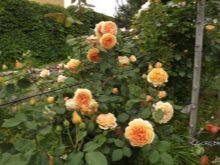

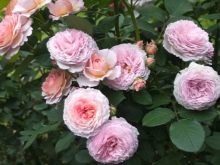
Advantages and disadvantages
The creator notes that all plants meet the following requirements:
- purity of color of petals;
- the strength of the scent;
- classic forms of buds;
- increased vitality.


The properties of Austin roses in different growing conditions may differ. The characteristics for central Russia are as follows.
- Frost resistance is higher than stated by the manufacturer.
- Plants often grow taller than indicated in the characteristics of the variety.This feature should be taken into account when planting, since replanting a 7-year-old bush will be problematic due to its size.
- When cultivating a rose as a climbing plant, you should also be prepared to grow longer shoots than indicated in the description.
- After planting a rose bush during the first two years, the flowers are small, the branches are weak, easily bending. At the end of the adaptation period, all indicators return to normal.

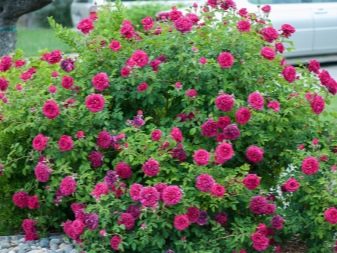
The main positive aspects of English roses:
- frost resistance;
- ease of care;
- the formation of flower buds along the entire length of the branch.
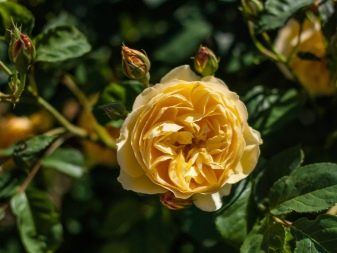
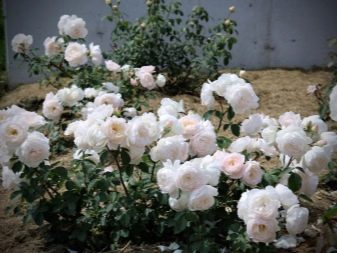
Disadvantages of some types:
- exactingness to weather conditions (rain, snow, hail, and so on);
- fragility of young branches under the weight of blossoming buds;
- dark-colored flowers tend to form black spots on the petals.

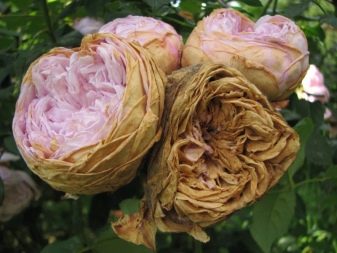
The best varieties
The best varieties are Lady of Shalott, Golden Celebration, Graham Thomas, Molineux, The Mayflower.
Lady of shalott
The plant is suitable for beginners. The flowers are painted in a warm peach-orange range with a pinkish tint at the edges of the petals, double. On each stem, from 1 to 3 large buds are formed. The aroma is strong, reminiscent of apple blossom and carnation. Rose "Lady Shalotte" blooms many times, almost continuously.
Branched bush, large, up to 2 meters in height, grows rapidly. It is successfully grown in Siberia and the Moscow region. Cover with lutrasil for the winter. With prolonged heat, it is able to shed flowers.
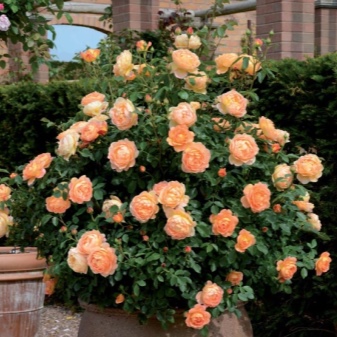
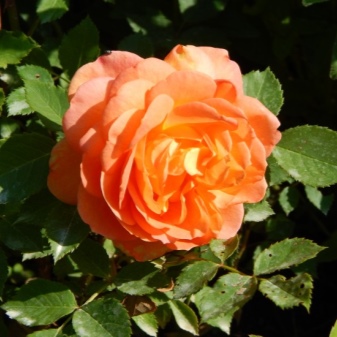
Golden Celebration
The variety got its name because of the double rich yellow flowers. Petals can be painted in pinkish specks, roses are large, up to 16 cm in diameter. Up to 10 flower buds are located on the shoots. In hot weather, the flowers quickly fall off and burn out. The stems are almost thornless. In southern Russia, Golden Celebration is grown as a climbing rose.
Pros:
- long flowering;
- fruit and berry aroma.
Minuses:
- average resistance to disease;
- reduced winter hardiness;
- low resistance to precipitation.
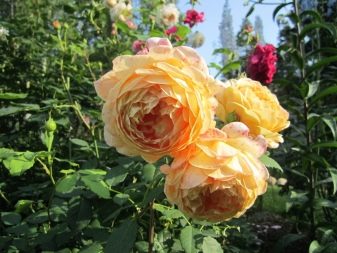
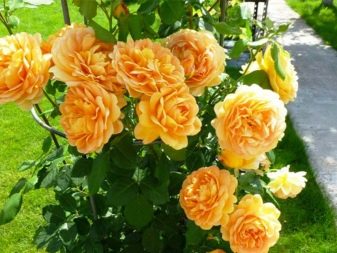
Graham thomas
A rose bush with a sweet tea aroma, large clear yellow peony flowers. 3-5 flower buds are formed on the lashes, on average, a blossoming bud stays on the branch for about 5 days. In hot climates, Graham should be grown as a climbing rose or scrub. Average winter hardiness, you definitely need a garter of branches to the supports. The bush is distinguished by abundant flowering until frost.
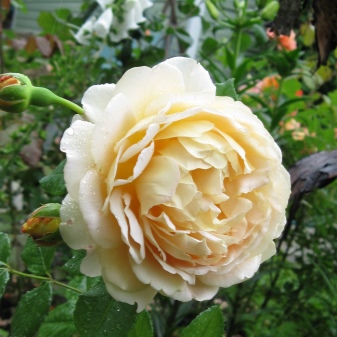
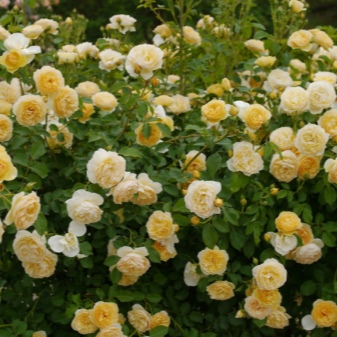
Molineux
Plants of this variety are recommended to be planted in groups. The bush grows up to half a meter in height, under good conditions it can reach a mark of 2 meters. The flowers are bright yellow, densely double, rosette, their aroma has a musky hue. Stems are thornless. The duration of flowering is the whole season. In the Moscow region and Siberia, the bush requires shelter for the winter.
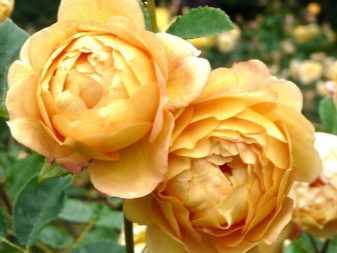
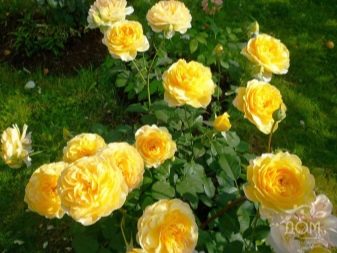
The mayflower
The variety is distinguished by bright pink double flowers of rich color with a strong aroma, blooms until the end of autumn. The bush is compact in size, but quite lush, spreading. Mayflower is better suited for colder climates. In warm conditions, it is attacked by a spider mite. Blooms early, resistant to fungus and other pests.
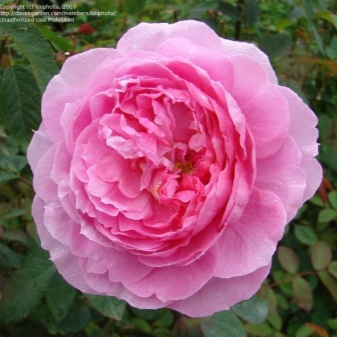
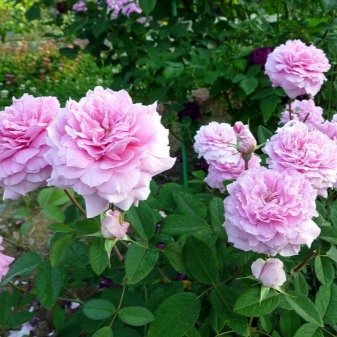
Let's present some new varieties of Austin roses bred after 2016.
Dame judi dench
The variety is named for actress Judi Dench. Its double flowers are colored in peach tones with a gradual loss of color intensity from the base of the rosette to the tips of the petals. The aroma is typical for tea varieties, but there are notes of cucumber, kiwi. The plant grows up to 1.5 m in height and width.
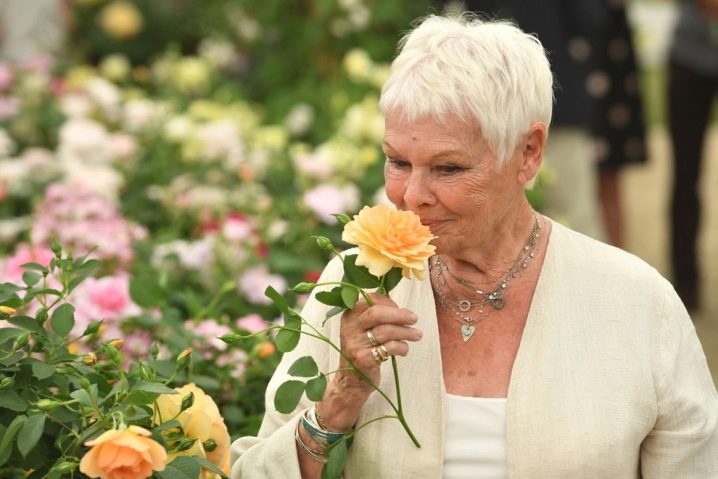
Vanessa bell
A hybrid of a musky rose. The petals are lemon yellow in color, turning into white. The shape of the flower is peony, rounded. Sprawling bush, up to a meter wide. Each branch has up to 5 flower buds. Long, abundant flowering. Lemon aroma with hints of green tea and honey.
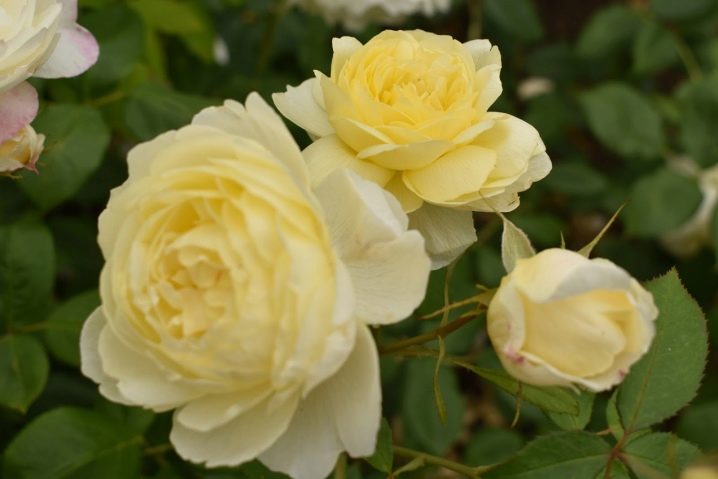
James L. Austin
Flowers of this species are double, rich cherry-pink hue. The plant blooms from June to October.The aroma is strong, berry, reminiscent of the smell of currants, raspberries. The bush is compact, suitable for growing in border compositions, containers.
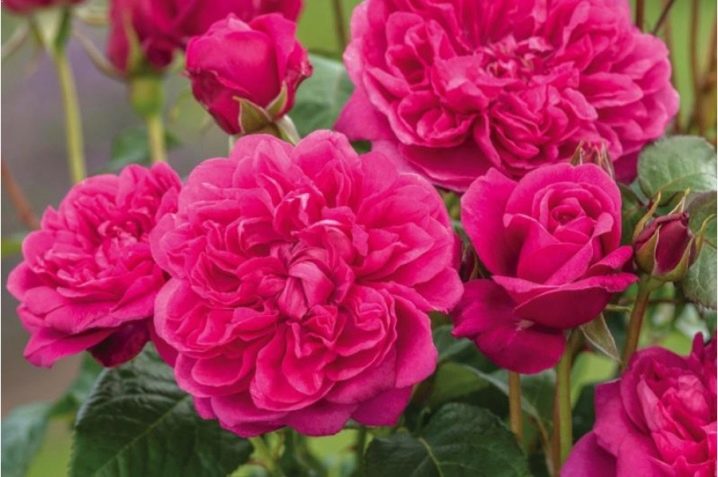
The most suitable cut varieties for the home and market are Beatrice, Carey, Charity, Constance, Edith, Kate, Keira, Tess.
These species are distinguished by their compact size of bushes, suitable for single and group plantings., unpretentious in care and resistant to winter frosts. Many thorns are formed on the stems, with the exception of the Beatrice cultivar. All flowers are double, peony, large. The color palette is mixed, from white-yellow to rose-gold shades, almost pure colors in Tess (burgundy) and Kate (dark lilac). Each variety has a unique strong aroma.
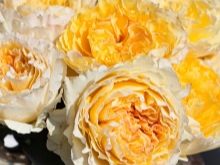

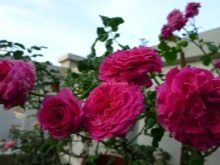
Landing
Before planting, the seedling must be treated: pruning the roots, disinfecting open areas with a manganese solution, soaking the root system in water for about a day with the addition of Kornevin or other stimulants. A pit for planting is dug 50x50x50 cm in size.The distance between the holes is at least 0.5 m, for climbing roses it should be increased to 100 cm.
In a separate container, the nutrient substrate for the rose is prepared. The garden soil is mixed with peat, humus, mineral fertilizers are added in a ratio of 1: 1: 1. Plants are planted in a prepared hole, the grafting site is about 7 cm below the soil level. The roots are straightened, sprinkled with ready-made soil. After planting, the bushes are watered with water, the liquid consumption is 5 liters. Further, the soil is compacted to avoid the appearance of cavities.
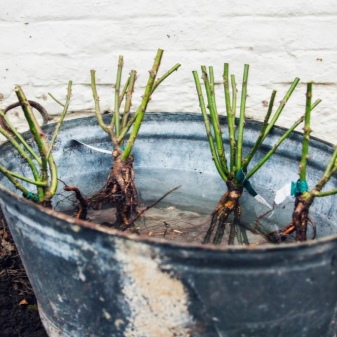
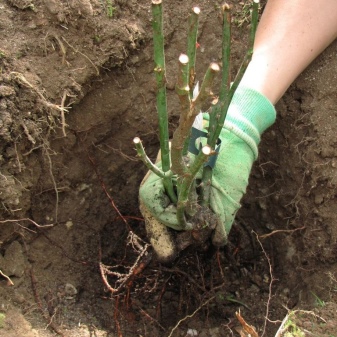
When the soil dries out to a depth of three centimeters, the plant must be watered. The best time for this is evening. Each adult rose must have at least 10 liters of water, climbing plants absorb up to 15 liters
Top dressing of rose bushes is carried out for 2 years of life in the spring season. Nitrogen fertilizers are used during the growth period, nitrogen-phosphorus fertilizers when buds appear. In the autumn season, potash fertilizers are applied to help the branches of the plant to ripen and transfer the winter period.
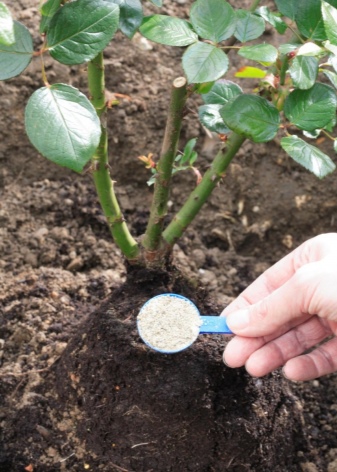
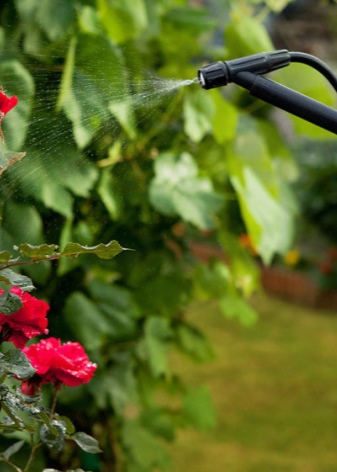
Rosaceae in Siberia are always planted on the southern side of the site with partial shade. For roses, it is worth choosing places located on a small hill. The degree of soil freezing in such areas is lower, which will save the bushes from freezing of the root system and the occurrence of fungal diseases. In Siberia, winds most often blow from the north, north-west or north-east, so it is worthwhile to build a fence for roses or hide them behind various outbuildings.
In the conditions of the Siberian climate, it is advisable to plant flowers in the spring, starting in May, when the soil temperature reaches 10 degrees Celsius. Grafted seedlings should be planted first, roses with a developed root system - from May 15 to June 15. This period is most optimal so that the lignification of the trunk has time to end by the beginning of winter.
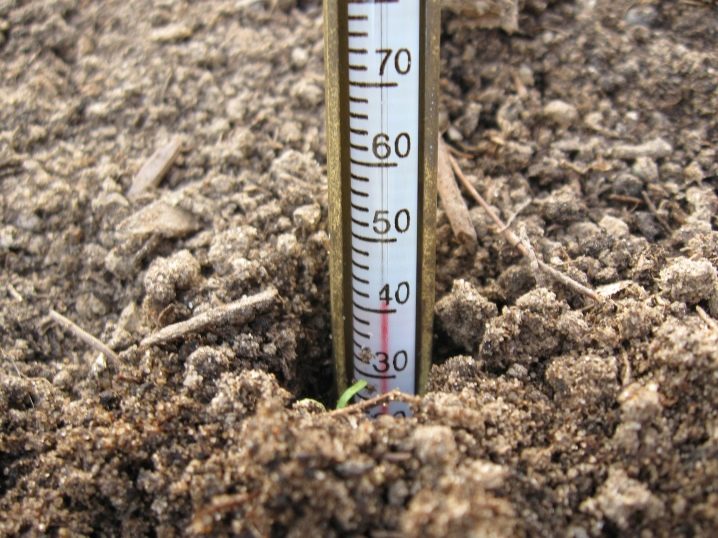
The soil should be loamy, acidic, with humus in large quantities. Before planting the plant, rotted horse manure should be placed on the bottom of the pit. The most optimal ratio of soil composition: 1: 1: 3: 2: 0.5 (clay, sand, humus, peat, wood ash).
Care
It doesn't take much effort to grow these varieties. Austin roses are placed in places where the light is at least 4 hours a day. It is advisable that the site for planting the plant is not flooded with melt water in the spring.
Bushes are pruned in spring and autumn. Weak unripe shoots, diseased and old branches are removed. The formation of the crown occurs according to the following rules: the branches of a small plant are cut in half, in wide spreading bushes they are shortened by one third, branchy varieties of roses are trimmed by one fifth of the length of the shoot.
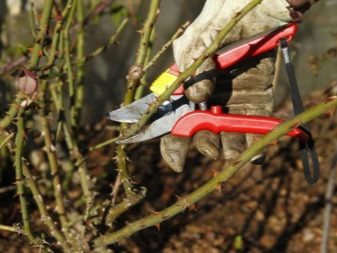

Weeds, dry leaves, flowers are regularly removed under the bushes. The soil is huddled and loosened.
Reproduction
Austin roses are bred in two ways.
By cuttings
For this method, fresh shoots are selected. Each is cut to save three sheets. The place of planting of seedlings is chosen in partial shade, without weeds and with well-dug soil. Before planting, the two lower leaves are removed, the shoot is buried in the ground so that one leaf remains on the surface. Each seedling is covered with a protective material - a half of a plastic bottle with an open neck, which is dripped with snow at the beginning of winter.
A year later, the complete rooting of young plants occurs. In the spring, they are already transplanted to a permanent place, trying not to touch or expose the root system during the procedure.


Layers
This method is only suitable for mature plants. The selected shoot is pressed to the ground almost at the base with a bracket, covered with earth and watered well. A year later, during rooting, the cuttings are cut off from the mother plant and transplanted.
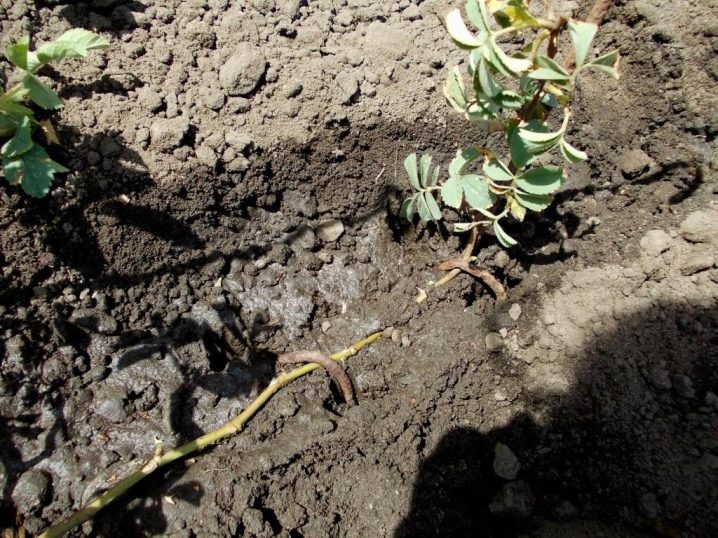
Preparing for winter
Preparation for wintering roses in the garden or plants placed in closed ground is carried out according to standard rules. English roses are not very resistant to frost, so they need protection and shelter for the winter. At a temperature of -5 degrees, unripe shoots, fallen leaves and bushes are removed. A fence made of polystyrene, plywood, plastic containers is installed around the plant. The inner space is filled with humus.
Branched varieties of roses are pre-pinned to the ground, branches are covered with fallen leaves. The layer thickness is up to 30 cm. Plants are opened after wintering at an air temperature above 0 degrees.
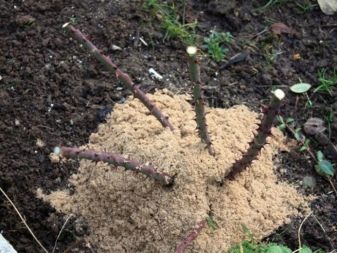
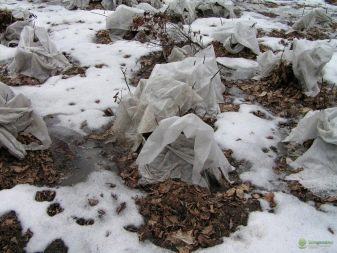
Examples in landscape design
Austin roses take root indoors and outdoors, thanks to which they are widely used in landscape design when creating mixborders, flower beds, hedges and other structures.
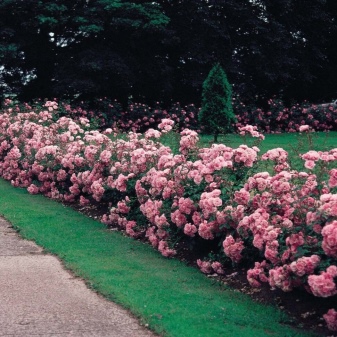
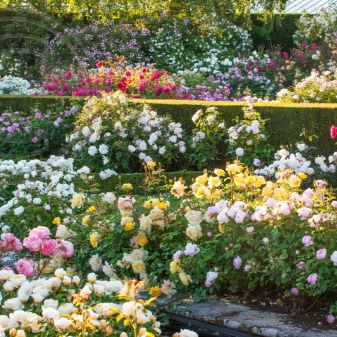
Climbing varieties are used in vertical gardening. Austin roses are combined with evergreen shrubs, conifers.
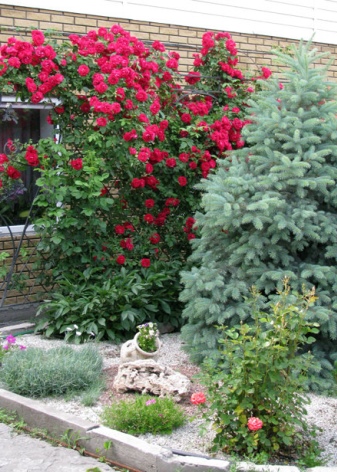
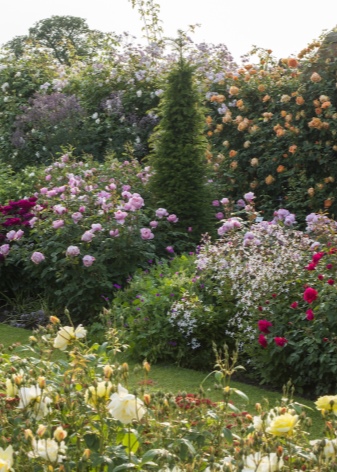
The classic version of the flower garden consists of undersized varieties located in the foreground, forming in the form of spreading bushes, and tall, upright or climbing species.
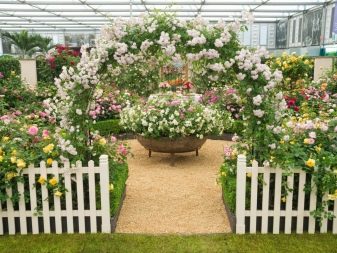
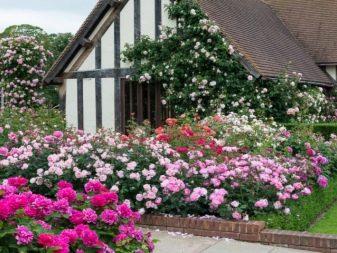
All about the disadvantages of David Austin roses, see the video below.

































































































The comment was sent successfully.